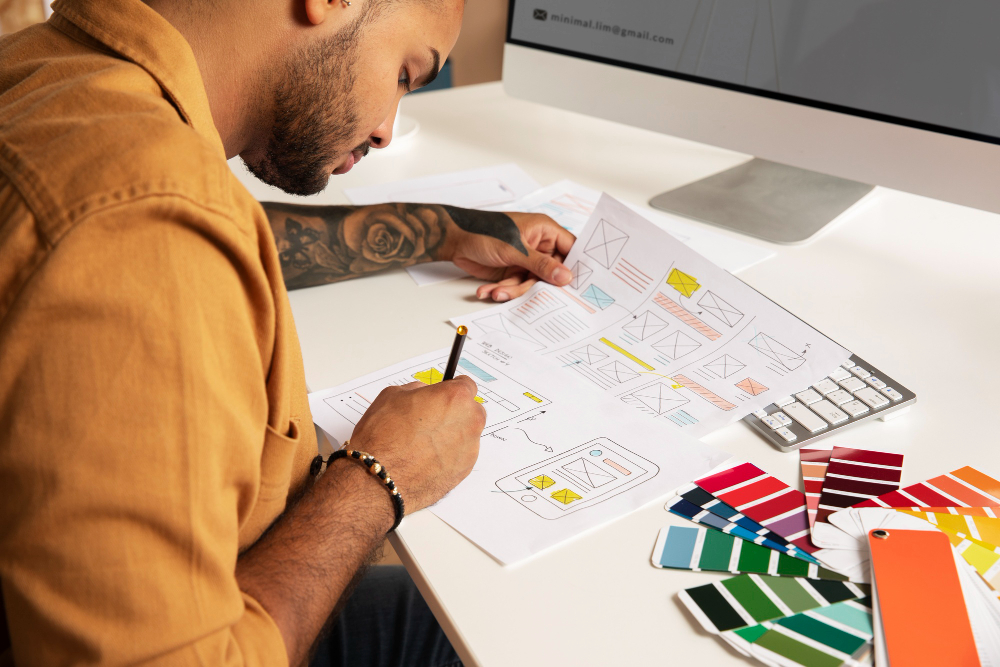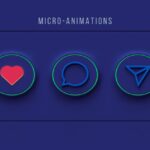When we discuss search engine optimization (SEO), most people’s minds immediately go to keywords, meta tags, and backlinks. But what about design, more specifically, visuals? Can images, layout, and visual elements genuinely influence your website’s search rankings? The answer is yes, and probably more than you realize. In SEO, visuals aren’t just for decoration; they’re strategic tools. Search engines like Google are getting better at understanding user experience, and visuals are a key part of how that experience is shaped.
Let’s examine how visual design impacts SEO and what it means for your website strategy.
1. SEO and User Experience
Good website design helps improve your SEO, while poor design can hurt your rankings. But SEO isn’t just about pleasing search engines, it’s about creating a great experience for real people. Search engines are designed to understand how users interact with a site, so if your website is difficult to use, both visitors and search engines will notice.
If people visit your site and quickly leave because it’s confusing or slow, search engines take that as a sign that your content isn’t helpful, and your rankings may drop.
Things like slow loading speeds, hard-to-read text, or an outdated look are part of technical SEO and matter just as much as using the right keywords or backlinks. All parts of SEO, technical, on-page, and off-page, need to work together. Good design makes it easier for users to stay on your site and helps search engines see your site as valuable.
2. User Interface
The user interface (UI) is where people interact with a device or software. A good UI makes this interaction simple and enjoyable. It aims to create a smooth experience by using a clear and user-friendly design. UI design focuses on understanding what users want to do and making sure the tools they need are easy to find and use. It uses things like fonts, colours, buttons, images, and animations to help guide users through the product in a visually clear way.
3. Responsive Design
Responsive design makes sure a website looks good and works properly on all devices, whether it’s a desktop, tablet, or smartphone. It uses flexible layouts, images, and CSS media queries to adjust the design based on screen size. This is important because it affects how users interact with the site. Without it, a website can look messy, be hard to use, or show content incorrectly on certain devices, which can frustrate visitors and cause them to leave.
By using responsive design, you create a smooth, consistent experience for everyone, which can help keep users on your site longer and encourage them to take action.
4. Website Speed and Performance
Website speed and performance help in both user experience and search engine rankings. A site that loads quickly keeps visitors interested, lowers bounce rates, and encourages them to browse more pages. To boost performance, you can compress images, use browser caching, cut down on HTTP requests, and clean up your code by reducing JavaScript and CSS.
These steps help your site load faster and respond quickly to users. When your website runs smoothly, it not only makes users happier but also helps your site rank better on search engines, making speed an important part of good web design.
5. Focus on Readability
Your website should be easy to read and nice to look at. Avoid using small fonts, low-contrast colours, or designs that weaken the eyes. For example, white text on a black background can be hard to read and might cause visitors to leave your site quickly.
Make sure key visual elements, like your homepage banner or main landing page images, reflect your brand and use consistent colours and messaging.
6. Visual Content
Visual content like images, videos, and animations helps in attracting and keeping visitors on your website. It makes the experience more engaging by breaking up long text, explaining ideas clearly, and creating a more interactive feel.
In web design, it’s important to make sure visuals are both good-looking and fast-loading. This means using the right file types, compressing files for quicker load times, and making sure visuals adjust well on all screen sizes.
To improve accessibility and SEO, visuals should include alt text or captions so they can be understood by search engines and users with disabilities. When used properly, visual content can greatly improve your site’s look, user experience, and search rankings.
Best Practices for Visual SEO
To maximize the SEO impact of your visuals, follow these key practices:
- Use descriptive, keyword-rich file names and alt tags.
- Compress images for faster load times.
- Implement responsive design across devices.
- Use visuals to enhance your layout, not clutter it.
- Add structured data to images and videos where relevant.
- Avoid overuse of heavy design elements that slow performance.
Integrating graphics and visuals into your SEO strategy can provide significant benefits, from improving user engagement and reducing bounce rates to increasing social sharing and backlinks. However, it’s important to ensure that your visuals are optimized for search engines and mobile devices to maximize their effectiveness.
In the field of Graphic Design and Digital Marketing, visuals aren’t just about style; they’re powerful SEO tools. If you’re investing time in SEO without considering visual design, you’re only doing half the job. It’s time to treat every graphic, image, and layout decision as part of your SEO strategy. After all, a picture might be worth a thousand words, but only if it’s seen, understood, and optimized for the search engine results page.




